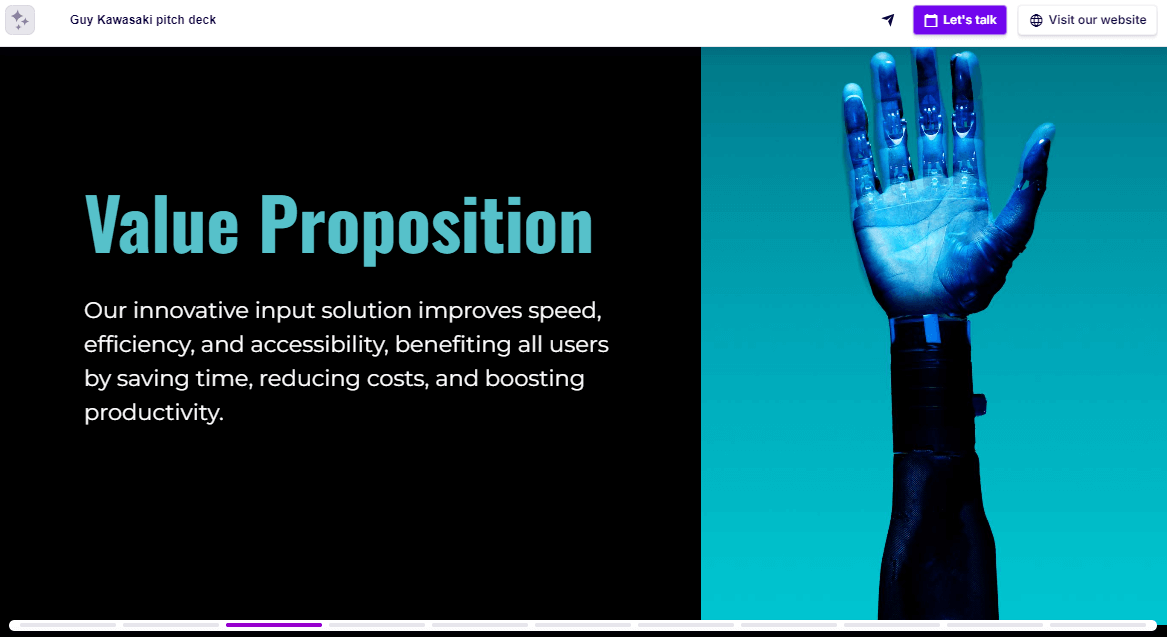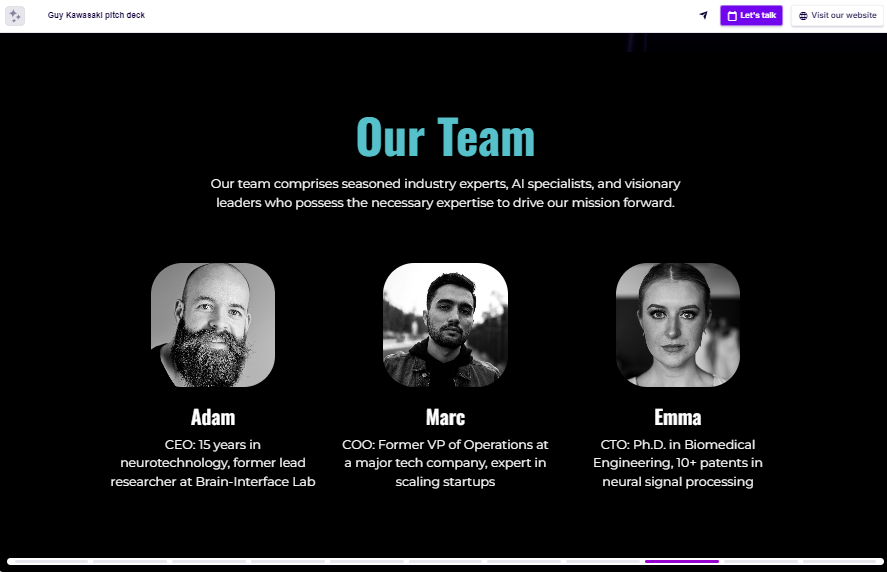Making the Guy Kawasaki Pitch Deck (Guide & Template)
Learn how to make a Guy Kawasaki pitch deck that impresses investors. See a 10-slide pitch deck example and get templates to create your best deck yet.


Learn how to make a Guy Kawasaki pitch deck that impresses investors. See a 10-slide pitch deck example and get templates to create your best deck yet.
Short answer
A Guy Kawasaki pitch deck is a 10-slide presentation concept created by pitching expert, Guy Kawasaki. It follows his 10-20-30 rule to ensure a clear, concise pitch for investors.
The 10-20-30 rule for pitch decks says your pitch should have 10 slides, last no more than 20 minutes, and use at least 30-point font.
Why 10 slides? A typical human brain, even one belonging to a venture capitalist, can only handle so many concepts in one sitting—10 slides is just the sweet spot. If it takes more than that to explain your business, you might need to rethink your pitch.
20 minutes is all you need for those 10 slides. Even with an hour booked, technical hiccups or late arrivals often cut into your time. And who wants to sit through a long, drawn-out presentation anyway?
And finally, a 30-point font ensures your audience can actually read what’s on the slide (especially in a big room). Packing slides with text means people will read ahead of you and zone out.
Stop losing opportunities to ineffective presentations.
Your new amazing deck is one click away!

















